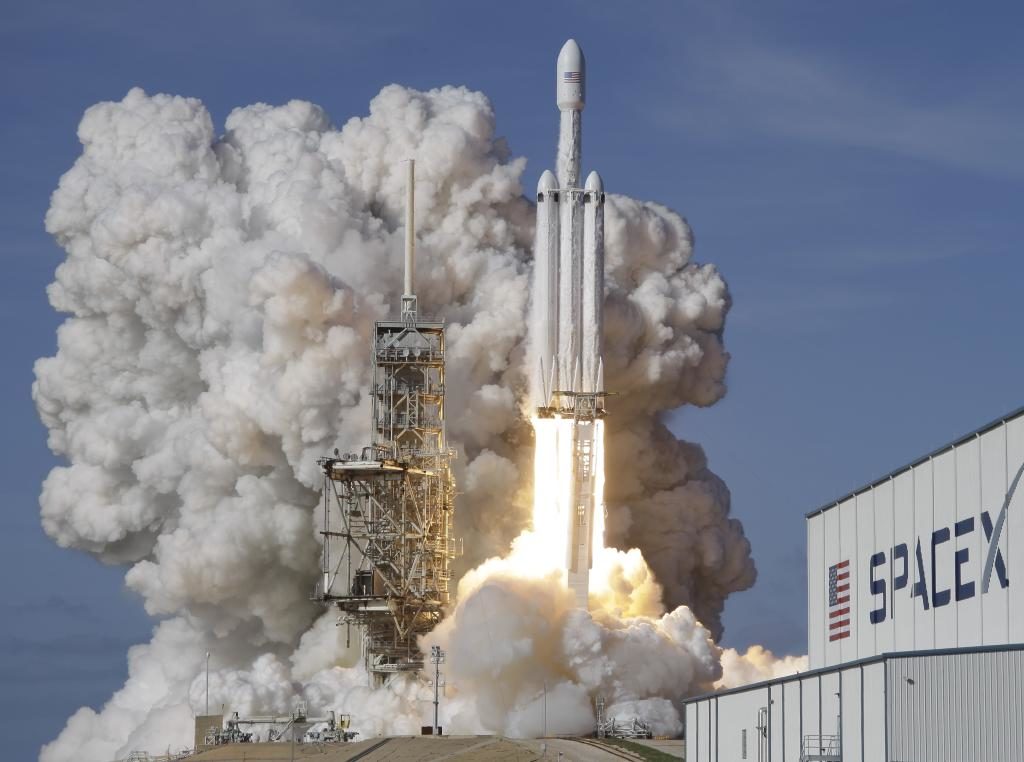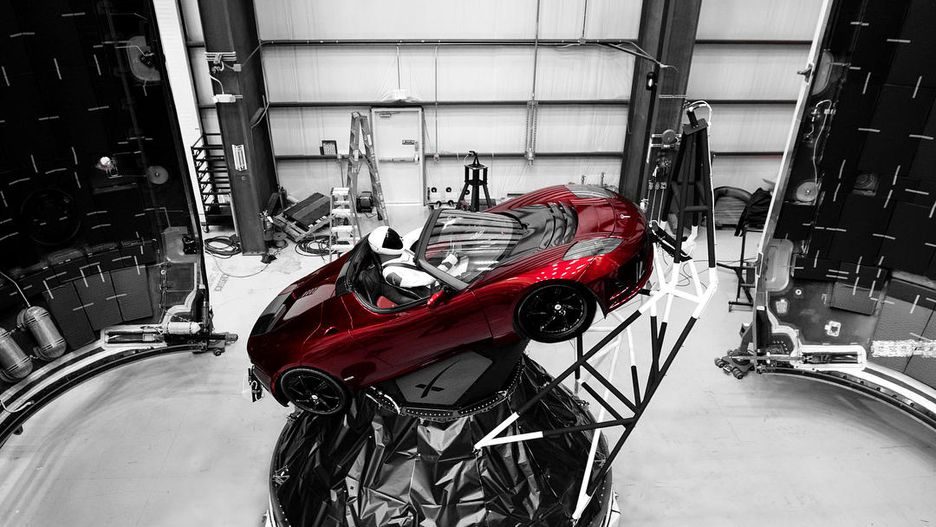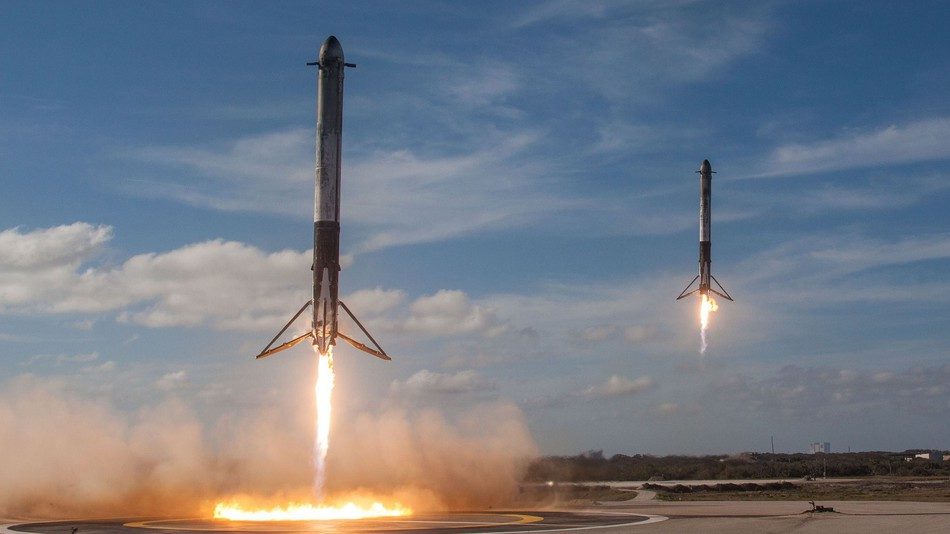
After more than two hours of delays due to high-altitude winds Tuesday, SpaceX and its founder and CEO Elon Musk lit up all 27 engines at the base of Falcon Heavy, the most powerful rocket launched from US soil since the Saturn V from NASA's Apollo days.
The demonstration launch has already been historic in multiple other ways.
For the first time ever, a pair of recycled boosters helped send a heavy payload to space. Only eight minutes later, those same two Falcon 9 side boosters returned and landed simultaneously at adjacent landing pads at Florida's Cape Canaveral Air Force Station, a sight unlike anything ever seen in spaceflight.
The launch took place just a few miles away from pad 39-A at Kennedy Space Center, the same place where Apollo 11 left the Earth almost half a century ago to take humans to the moon for the first time.
Just after 12:45 p.m. PT, the massive launch system shot as much as 5 million tons of thrust out of its tail end and managed to clear the launch tower without any explosive incidents.
This cleared an important first hurdle for the long-awaited launch, even though it was only the first part of a very long journey that aims to send a payload consisting of Musk's cherry red Tesla Roadster on its way toward Mars.

But after literally shaking the ground where spectators watched from a distance, the two side boosters lifted the rocket toward space, then detached from the center core and performed a flip maneuver to head back to Earth. After both landed safely, the fate of the center booster was less certain as the camera feed on the drone ship in the Atlantic cut out just before the landing attempt.
Musk said later at a press conference that the center booster had been lost. Only one of three engines relit for the landing burn and the rocket hit the surface of the Atlantic Ocean at 300 miles per hour (483 km/h) about 328 feet (100 meters) from the drone ship, which was damaged and showered with shrapnel in the process. Musk told reporters there were no plans to re-use the center booster, even if it had been recovered.
About 45 minutes after the launch, Musk tweeted that the second-stage booster had been successfully restarted. The upper booster and payload spent several hours "cruising" in the Van Allen belts surrounding Earth to see how the spacecraft fared getting zapped by the intense radiation there.
Tuesday evening, the second-stage booster performed one final burn to push the Roadster and its dummy driver dubbed "Starman" in the direction of Mars. Musk reported via Twitter, however, that the push may have been a little bit too hard, sending the newly initiated space car on a course for the asteroid belt.
The live feed of the Roadster and "Star Man" stopped less than five hours after it began, so this may be the last we hear of a very memorable payload.




Synchronized landings
Elon Musk is something of a genius.